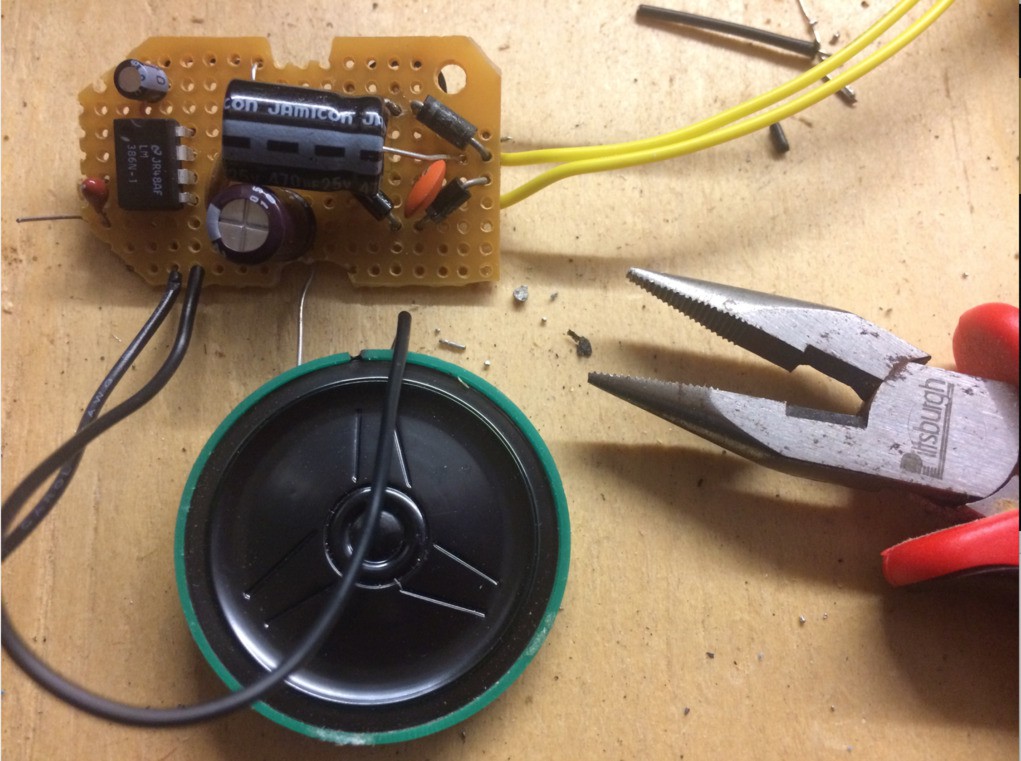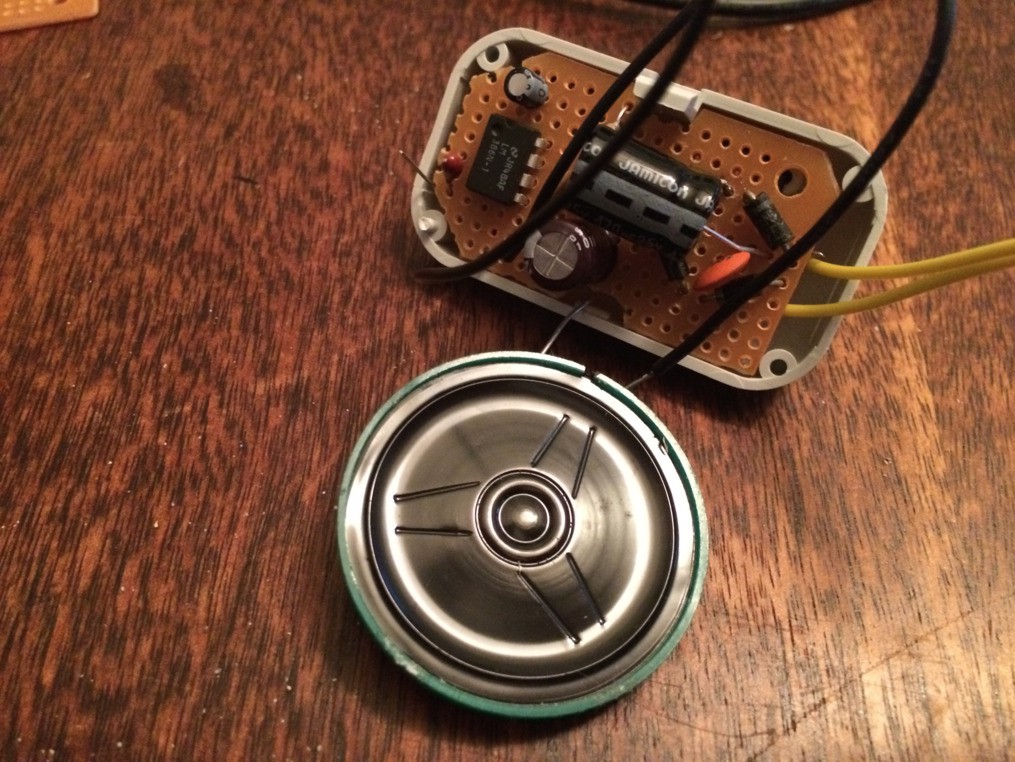I've got a small pile of LM386 amplifiers that will never see the light of day. Way back when, I loved building little amps for things and somehow got it in to my skull that I should have stock of these sitting around. Along with some LM741 op-amps. I dunno.
Anyway, huzzah! My stupidity as a younger me is to the benefit of my good friend: it's easy enough to build a LM386 amplifier with quite significant gain. And just his luck: I've got one that's already built that I can do some quick tests with.
Empirical testing: a gain somewhere between 20 and 50 seems about right. The datasheet for the LM386 has a 50-gain amp which means absolutely no thinking on my part about the amp itself. I like that, even knowing it'll be a compromise.
The more important question is: how am I gonna power this thing?
The two most important characteristics of any finished engineering product are:
(1) how does it look? and
(2) how does it perform?
(Sadly, that first one is almost always before that second one.)
The plan, then, is to re-use the RCA input and put an amp inline, inside the intercom. There's plenty of room inside, and the intercom runs off of a 20v AC center-tapped transformer.
The LM386 is a pretty versatile amplifier. It runs over a wide voltage range, but 20 is really pushing it. So, a quick full-wave bridge rectifier and some too-small filter caps from the center tap, then, and we've got a 10-ish volt DC supply.

There are three actual serious questions to consider at this point. Firstly: is this going to pull more current than the transformer can handle? To which the answer is really, seriously, no. The transformer for this thing is a beast, presumably because the long wire feed from the transformer (in the basement) to the head-end (literally on the far corner of the house), including all of the other units in the house, is large. It's obvious from this arrangement why this is an AC set up instead of DC (where the resistance losses would be tremendous, and possibly a fire hazard). So I'm not worried about pulling an extra few hundred milliamps.
The second question is: how do I safely enclose this so that it doesn't short something out? Well, I've got some small plastic project enclosures, and I think I can just jam an LM386 with full wave bridge rectifier in to one. With some difficulty. But the enclosure is snap-together, and should be fine for this application.

The third question is: how is it going to sound? The LM386 is a notoriously noisy little bugger. Circuits made with it are generally unshielded, and the chip will happily pick up noise on the power line. Or the input. Or the output (yes, seriously). While there's no way to know until I get it in there, I can take some reasonable precautions: shielded input and output wires (cut off of an old pair of headphones, actually) and a plentiful supply of various RFI supressor beads just in case. Which I hope I won't need.
 Jorj Bauer
Jorj Bauer
Discussions
Become a Hackaday.io Member
Create an account to leave a comment. Already have an account? Log In.